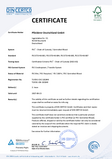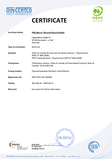Target 1
Increasing the total wood yield of wood used in production in each plant to a minimum of 90% in 2025

Our wood yield, an important performance indicator - is steadily improving: In 2022, we achieved wood yields across our complete wood mix of 82% to 94% in our plants. Due to ongoing innovation in sorting and impurity recognition as well as concrete investments in such technologies, we consider a minimum share of 90% in each production plant feasible until 2025. For factories that already have a yield of over 90%, our goal is to maintain it. The current technology does not allow a yield of 100%; especially the added recycled wood will always contain a share of undesirable content.
Target 2
Increasing the share of post-consumer recycled wood from 40% (2020) to 50% (2025)

We use our strength as the largest user of recycled wood in Germany, to consistently improve the cascading use of wood. Thereby we contribute to a ‘circular economy’, whereby nothing is wasted – i.e. end-of-life wood products become valued raw materials rather than waste in landfill sites.
We want all wood products, including our own, to be repurposed. In practice, our cascading use system means that already today we use predominantly, with a share of 48%, post-consumer recycled wood.1 The second largest share are with 32% sawmill residues. The remaining 20% comprises wood from thinnings and calamities from controlled forest management in Germany and directly neighbouring countries. This target is all about increasing the amount of recycled wood we source from post-consumer sources.
1 As post-consumer material we consider prepared recycling wood from damaged pallets from packaging, used furniture or kitchens as well as internal rejects; the latter comprise only 2.5% of the total recycled wood.
Recycled wood: our performance and target
| 2018 | 2019 | 2020 | 2021 | 2022 | Target 2025 | |
| Share of post-consumer recycled wood in our wood mix in percent | 38.0 | 41.8 | 41.7 | 46.2 | 48.1 | 50.0 |
The volume of this material available to us is affected by reuse and recycling initiatives in the European Union, economic development, patterns of consumer behaviour and furniture retailers reclaiming used furniture. In 2020 we used over half a million tonnes of it, and we commit to increase this by eight percentage points.
Our strategic approach to sustainability includes engagement with others to help us achieve the target. If we can help influence the behaviour of consumers and businesses, then we may see increased availability of post-consumer wood.
Whilst we want to obtain greater quantities of recycled wood, we also insist on using only the highest quality materials. Our boards are regularly tested in our central lab in Arnsberg, and we work with our suppliers to achieve 100% compliance with product quality rules.
For our high quality products, we use wood recycled according to the standards of the German Waste Wood Ordinance, which is the strictest in Europe, and is largely free of chemical, metallic or mineral impurities.
“We want wood to be used in products before it is ultimately burned a long way down the line – this generates more value to society and the economy.”
Carsten Möser-Benz
Director, Wood Procurement

80% of the wood raw materials used in our products are sawmill residues and recycled wood.
Case study
Sorting, cleaning and testing recycled wood
Our yield rate is an expression of the quality of our main raw material: recycled wood. As the material comes into the plant we want to minimise all losses of material as we clean it. The very high yield rate achieved at our sites is down to our consistent investment in state-of-the- art technology. Our sorting and cleaning processes, supplier relationships, and rigorous testing are key to our success. The ‘sorting tower’ aims to ensure no unwanted materials, such as plastics, arise in our production lines. Indeed, we are pushing the boundaries of yield maximisation: the high number of sorting processes in our towers means increasingly finer fractions of raw material become available to us. In effect, we are reducing our reliance on fresh wood by-products by using recycled wood fibres as many times as possible.
Target 3
Manufacturing 10% of wood-based materials using biogenic binder content by 2025

In our production, we can process around 250,000 tonnes of resins, binders, additives and lacquers per year. To partially replace these with renewable raw materials, we are pursuing a concrete goal: by 2025, we aim to produce 10% of our wood-based products (measured by volume) using a share of biogenic resins. We also offer OrganicBoard Pure, a version with 100% renewable binder.
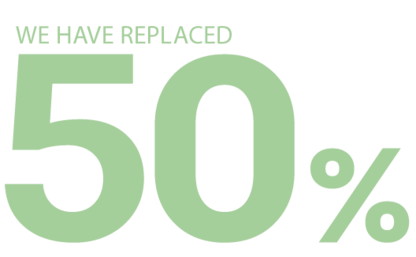
... OF FOSSIL GLUES WITH RENEWABLE ORGANICGLUE IN THE ORGANICBOARD PRODUCT AND PLAN TO OFFER ORGANICBOARD PURE, A VERSION WITH 100% RENEWABLE BINDER.
Target 4
Introducing a framework for assessing the sustainability of our suppliers in 2023
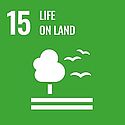
As part of the materiality analysis, we plan to actively engage external stakeholders in the upstream and downstream supply chain on key ESG topics (especially customers and suppliers) in 2023 and in subsequent years.
This will promote continuous improvement, ensure the relevance of our engagement with the market and develop innovative solutions to ESG issues. This includes demonstrating that our suppliers also take sustainability seriously.
Our aim is to increase transparency in our supply chains and to achieve this we are developing framework conditions and criteria catalogues in 2023. In particular, we intend to analyse the impact of our business activities in the areas of greenhouse gas emissions, biodiversity and human rights. First of all, the goal is to clearly define the status quo so that we can set milestones and measure progress in detail over the next three to five years.
To this end, we have set ourselves the goal of establishing a framework for measuring sustainability in our supply chain by 2023. This may be within the framework of existing rating systems and ratings, or based on a specifically agreed set of criteria. This framework will include, but not be limited to, the requirements of the Act on Corporate Due Diligence Obligations in Supply Chains (Supply Chain Act), which came into force on 1 January 2023. The Supply Chain Act focuses on the protection of human rights and protection against selected environmental risks.
Another strategically important topic for our company is biodiversity, which we influence not only in our supply chains but also through our contribution to climate change mitigation. In the Materials field of action, we are focusing on evaluating our impact on biodiversity throughout the supply chain as an aspect of our supplier assessment in 2023.
Target 5
Developing specific KPIs for water and waste in 2023
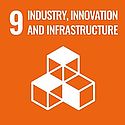
Waste
Despite our stringent approach to recycling wood, waste also accumulates at Pfleiderer in the form of ash, residues from the post-cleaning of waste wood and packaging. For 2023 we have set ourselves the goal of introducing additional indicators so that we can better document, manage, and reduce non-wood waste flows in the future.
Water
In view of the global problem of water scarcity, which is further aggravated by the climate crisis, our handling of water is also becoming strategically more important. Consequently, we are developing KPIs on the use of water and water-related impacts of our business activities as part of our sustainability goals.
For each plant, we draw up balance sheets on freshwater consumption. The use of recycled water, on the other hand, is not specifically recorded. To define concrete reduction targets for our plants and individual production steps, we have therefore resolved to develop KPIs for surveying of water use in 2023.

... WE HAVE SET OURSELVES THE GOAL OF INTRODUCING ADDITIONAL INDICATORS SO THAT WE CAN BETTER MANAGE AND REDUCE NON-WOOD WASTE FLOWS IN THE FUTURE.
Read more about sustainability at Pfleiderer
These topics may also be of interest to you:


